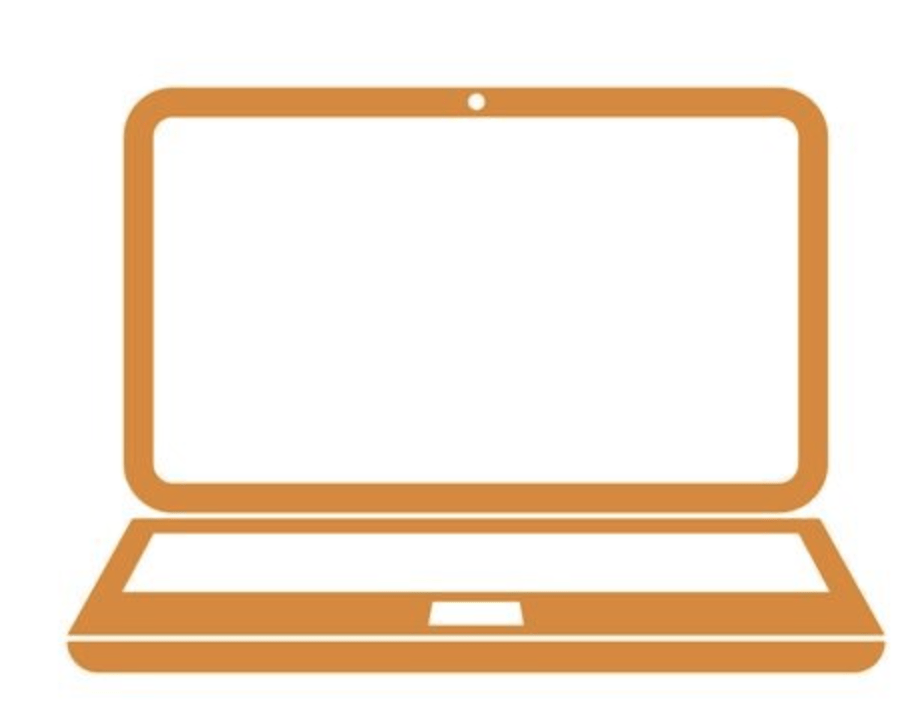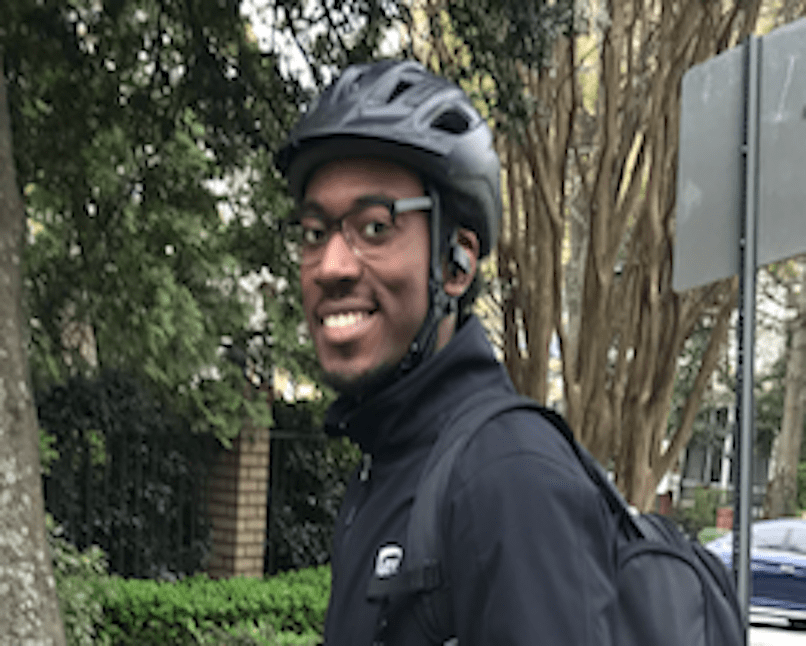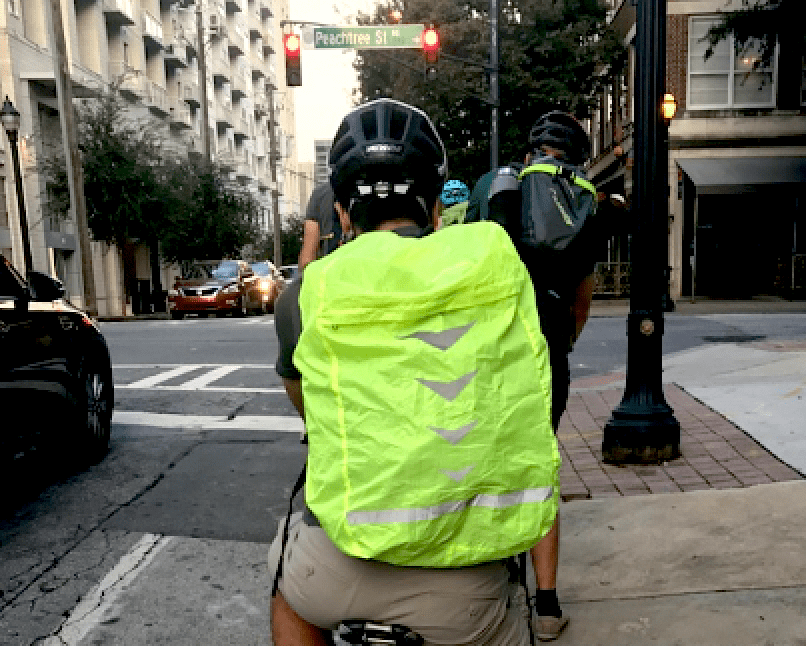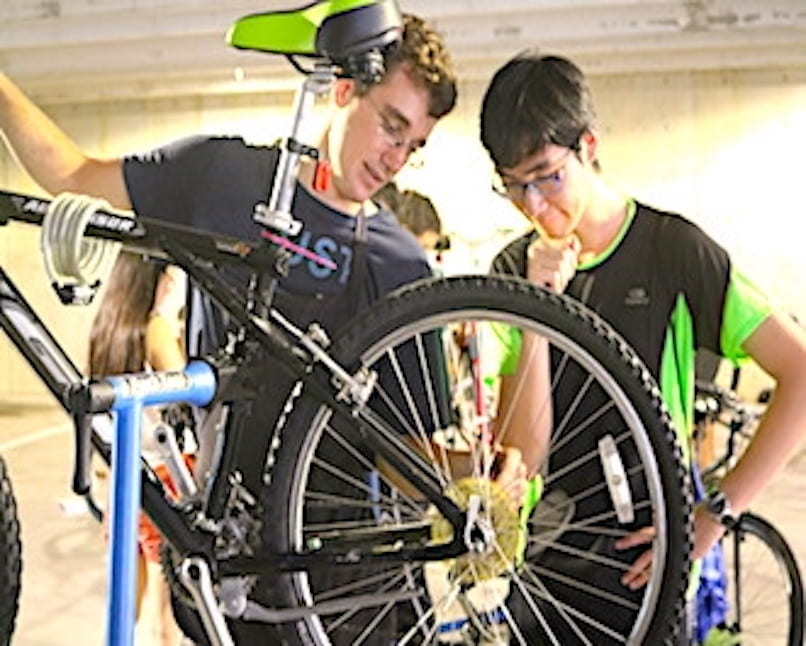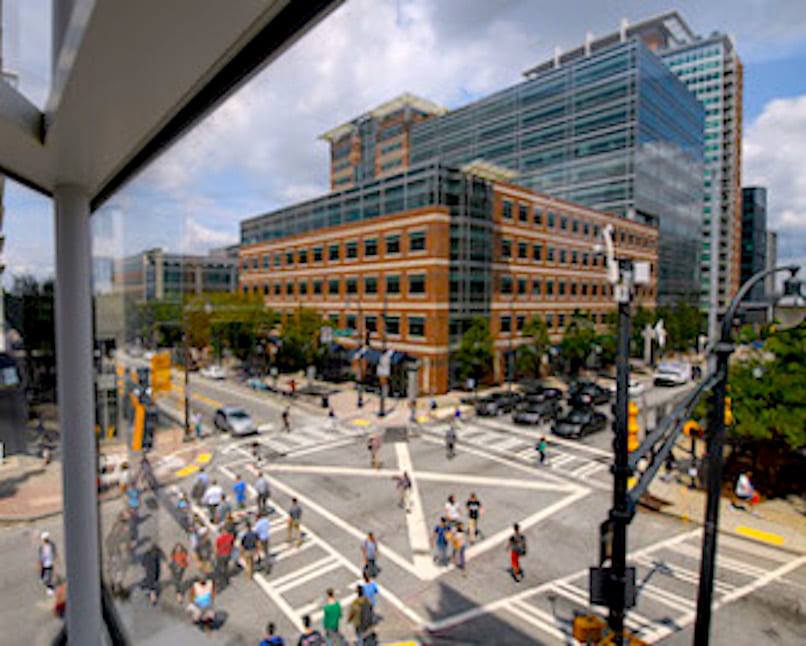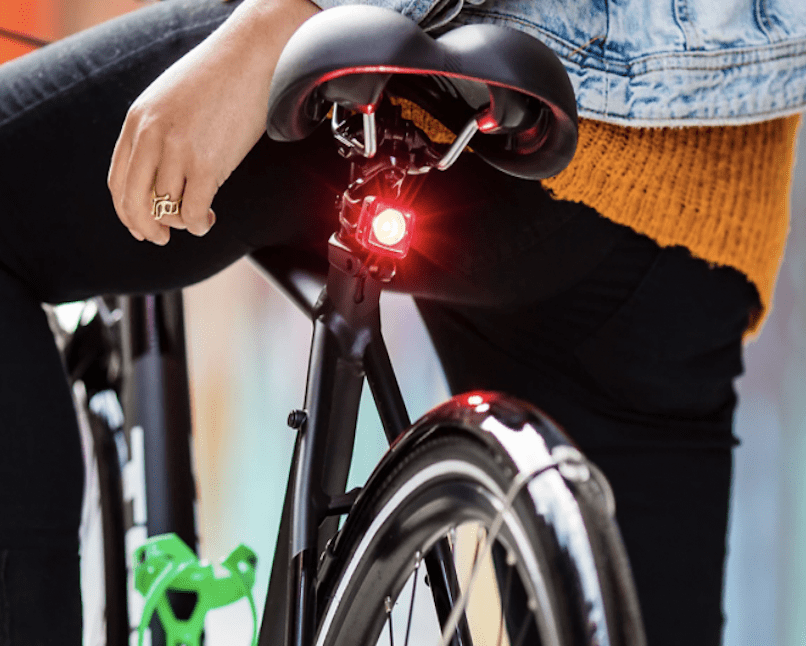
Ride Smart Bike/Scooter Safety Class
Riding Safety Basics
Wear A Helmet
Wear a properly adjusted helmet each time you ride. Helmets reduce the risk of serious head injury in a crash by 63-88% and facial injury by 65%.
Stand Out
Wear bright colors and reflective elements to contrast with the road environment. Consider a bright backpack cover, jacket, and socks to highlight the movement of the leg.
Follow the Rules of the Road
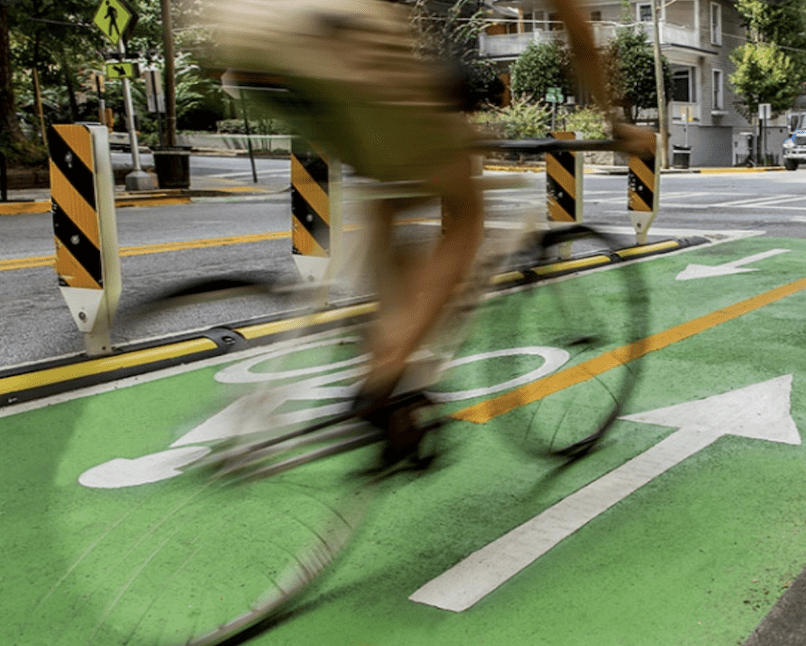
Bikes are legally vehicles and must follow the same rules of the road as motor vehicles, including following all traffic signs and signals and riding with the flow of traffic.
Ride Alert
Minimize distractions while you ride. Constantly scan the road for turning vehicles, car doors opening, road hazards, and other people.
Rules of the Road
All state and local laws pertaining to bicycles and personal mobility devices will be enforced on campus, in addition to Georgia Tech policy, procedures, and guidelines. For more information regarding the rights and responsibilities of riders in Georgia, please consult the Bicyclist Pocket Guide from Georgia Bikes.
- Obey all traffic signs and signals
- Stop at all stop signs and red lights
- Ride on the road in the same direction as motor vehicle traffic; do not ride on the sidewalk
- Bikes may utilize the vehicular traffic lane, when appropriate
- Yield to pedestrians; on a shared path, slow down, announce your presence, pass on the left, and allow at least three feet of clearance
- All bikes must have front and rear lights visible from 300 feet in low light
- On campus, bikes may only be locked to bike racks
- Campus bike racks are for short-term parking; bikes left for extended periods will be tagged and removed per campus policy
Helmets
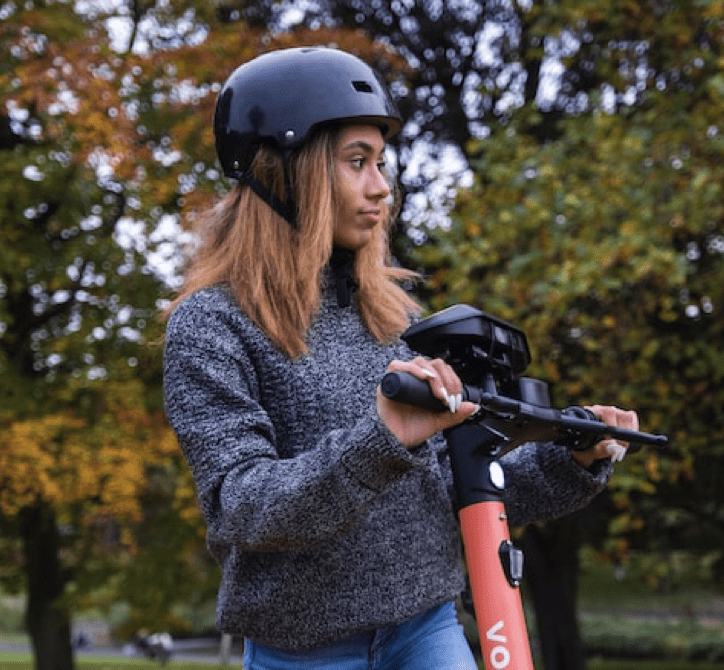
Helmet Resources on Campus
Participants of the Ride Smart Bike/Scooter Safety Class receive a free helmet thanks to Parking and Transportation Services.
Parking and Transportation sells helmets for $12 at 770 Spring Street inside the E81-Tech Square/GT Hotel parking deck from 7:30am-5pm.
How to Adjust Your Helmet
- Place the helmet on your head so that it is level and about 1″ above your eyebrows.
- Adjust the pads or rear dial to achieve a secure fit.
- Slide the straps on both sides to form a “Y” just under and in front of your ear.
- Fasten and adjust the chin strap so that there is no more than a finger space under the strap.
- Test the fit. Push the helmet; there should be no more than 1″ of movement in any direction.
What to Do After a Crash
- Safety First
Make sure that everyone is okay. - Call 911
Though an incident may seem minor, reports from crashes help to improve road safety and may be required by insurance companies. - Safety Last
Check for damage to your helmet and bike or scooter. Thoroughly perform the ABC Quick Check before riding your bike or scooter to ensure that it is safe to ride. If using a shareable device, report the crash to the company through the app. If your helmet is cracked or damaged, replace it.


